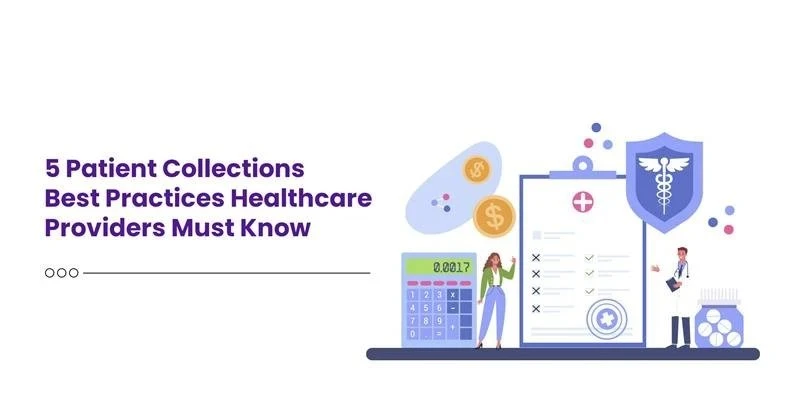Patient collections play a vital role in a healthcare organization’s financial health, demanding utmost care and attention. Operational costs and patient financial responsibility pose increasing challenges for healthcare providers in balancing sustainable revenue cycles while providing quality care.
Here, we discuss the importance of patient collections and five best practices that can help providers optimize their patient collections process to improve cash flow and maintain good patient relations.
Importance of Patient Collections
Patient collections, as an operation, has witnessed a significant shift in recent years. It is no news that high-deductible health plans are slowly becoming the norm, wherein patients must pay a bigger portion of their medical bills. This change has made healthcare collections a significant component of healthcare revenue cycle management.
There is no denying that poor collection practices lead to huge revenue loss, which may negatively impact the capacity of a health facility to offer better patient care. Inefficient collection also affects patient relationships and patient satisfaction levels.
In today’s healthcare landscape, nothing matters as much as the patient’s experience. Having said that, healthcare providers should implement successful strategies for collections that do not jeopardize their financial stability while keeping good relationships with patients.
With that, it is time to explore five patient collections best practices that can help healthcare providers to improve collection rates, patient experience, and streamline their overall RCM operations.
Learn how Pain Management Group Revenue Leaps by 30% with Streamlined Claims Filing.
5 Patient Collections Best Practices
Take a look:
Maintain Transparency About Upfront Expenses
The key to seamless patient collection is clear communication about costs before service delivery. Providers should facilitate price-transparency programs, thereby allowing patients to have a clear outline of their financial obligations at the first stage of their healthcare journey itself. This also includes specific estimations of out-of-pocket costs, what insurance covers and what does not, clear delineation of patient responsibilities before procedures or treatments begin, and clear cost breakdown.
Unclear or unexpected medical bills often result in dissatisfied patients and delayed payments, whereas open and transparent communication tends to create trust in your practice, which will encourage patients to pay promptly.
Provide Different Payment Options and Plans
Modern patients expect both convenience and flexibility while paying their medical bills. Therefore, it is critical for healthcare providers to provide multiple payments options that can meet different preferences and financial situations such as:
- Cash
- Checks
- Credit cards
- Online payment portals
- Mobile payment options
In addition to this, customize payment plans for patients according to their financial status, income, overall bill, and payment track. This, in turn, will not just show compassion but also contribute to a higher healthcare collection. The whole idea is to make paying medical bills less painful or time-consuming for patients.
Utilize Technology for Efficient Billing and Claims Processing
Manual processes leave room for billing errors and slows down cash inflow but technology, and particularly AI-driven automation, can pull the most up-to-date information from insurers to improve efficiency and accuracy in the billing and claims process.
New-age revenue cycle management systems can automate the verification of insurance coverage, producing proper cost estimates and processing claims efficiently. They also possess the ability to integrate electronic health records (EHRs) and offer a patient portal that gives access to patients’ billing information as well as payment processing.
Providers can also utilize advanced analytics tools that show trends in payments and use artificial intelligence (AI) solutions to predict payment probability and suggest the best approach to collection.
Needless to say, proper technology infrastructure enables better collection rates while also cutting down the administrative burden in serving patients through faster and more accurate billing processes.
Train Staff on Compassionate Collections and Financial Counseling
The approach and tone of collections often determine a patient’s willingness to pay. Patients too want to be treated gently and appreciate solution-oriented communication. Front-line staff are absolutely crucial to winning collections; therefore, comprehensive training is important.
They should be well-equipped with good communication skills, financial counseling, and insurance terminologies. They should clearly explain payment options to the patients with a pinch of empathy and professionalism during a complex discussion regarding their financial liabilities.
Up-to-date training and role-playing exercises can ensure that every interaction with patients maintains high standards. Needless to say, a culture of empathetic collections guarantees that all financial discussions are respectful and productive in maximizing the success of a collection.
Monitor Collection Metrics Regularly
Continuous monitoring of the collections’ performance helps identify trends, bottlenecks, and opportunities for improvement. Not to forget, data-driven decision-making is at the heart of optimizing collections.
Healthcare organizations should keep track of key metrics including:
- Collection rates by payment type
- Days in accounts receivable
- Bad debt ratio
- Point-of-service collection rates
Patient satisfaction scores regarding billing give clarity on the success of collection processes from the patient’s perspective. This type of information will aid in optimizing payments and correcting problematic areas before they turn into significant issues.
Constant analysis provides organizations with proper information to implement the right strategies and improve financial outcomes.
Bottom Line
As we’ve explored, successful collection strategies hinge on five key practices: transparent cost communication, diverse payment options, technology utilization, staff training in compassionate collections, and regular metric monitoring. Each of these elements contributes to a comprehensive approach that balances financial necessity with patient satisfaction.
While implementing these best practices can significantly improve collection rates, many healthcare providers find it challenging to excel in all areas simultaneously. This is where partnering with experienced revenue cycle management (RCM) specialists can prove valuable for your organization. These partners bring specialized expertise, established processes, and advanced technological solutions that can help healthcare providers optimize their collection practices without diverting focus from their primary mission—delivering quality patient care.
Whether managing collections in-house or working with RCM partners, the key is to maintain a patient-centric approach while ensuring financial sustainability. By focusing on clear communication, offering flexibility in payments, leveraging technology, training staff effectively, and monitoring performance, healthcare providers can create a collection system that works for both their organization and their patients.







